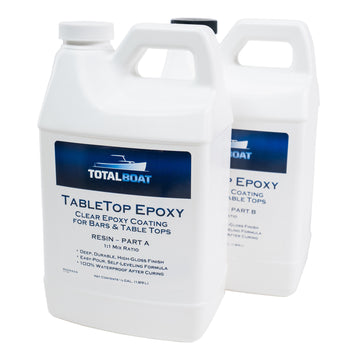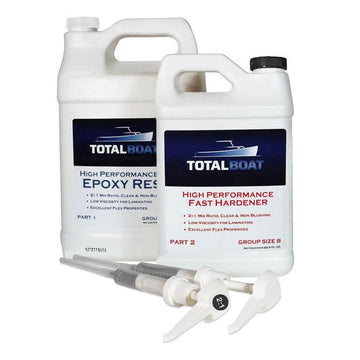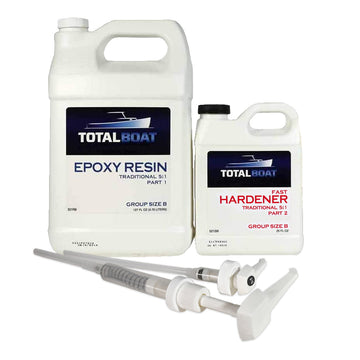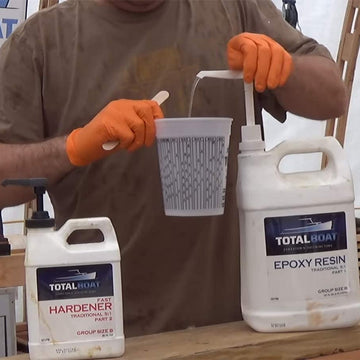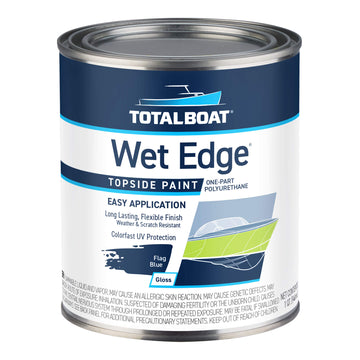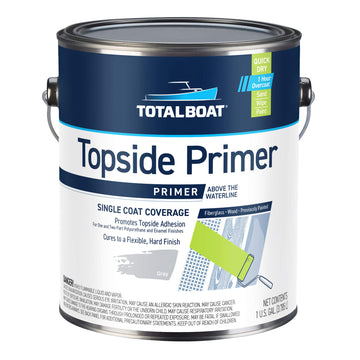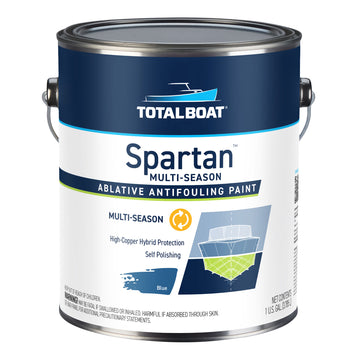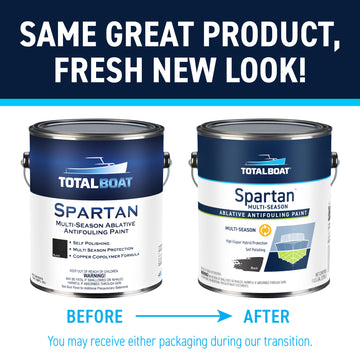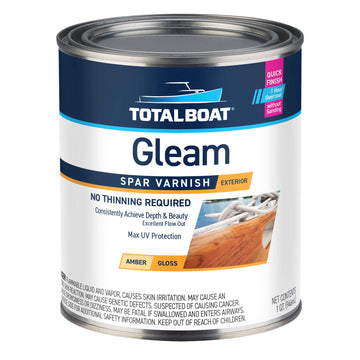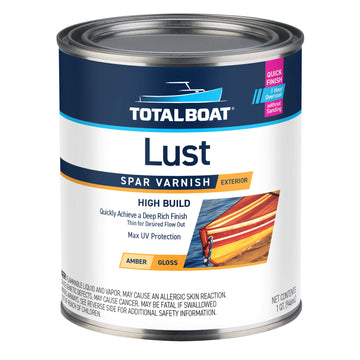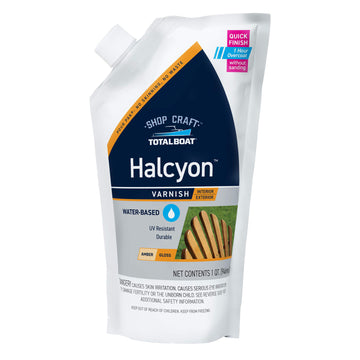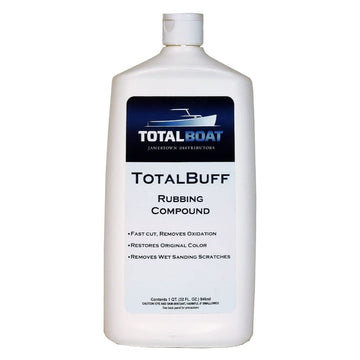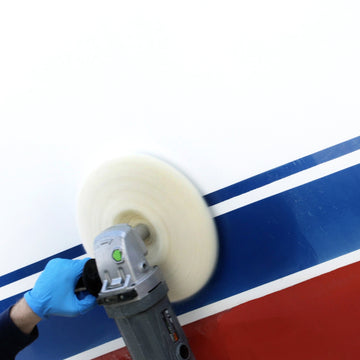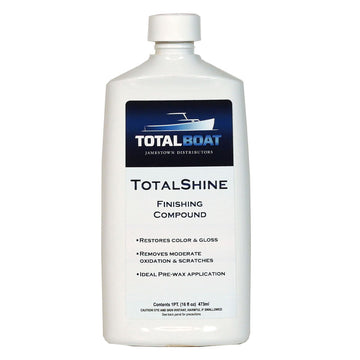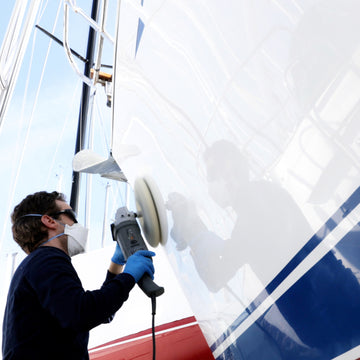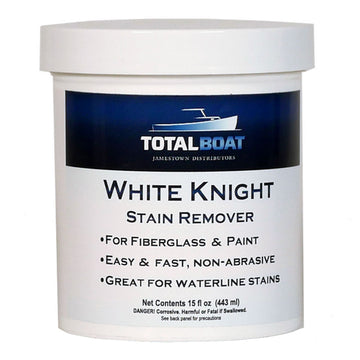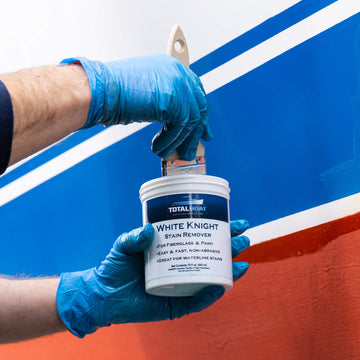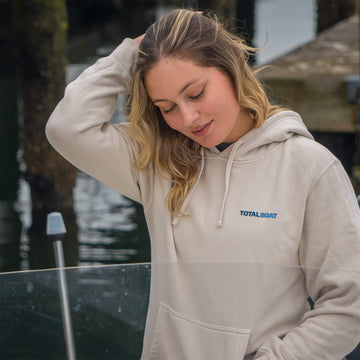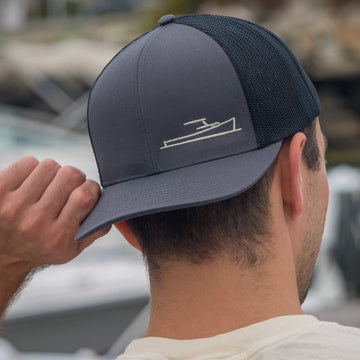

First Coats of Paint on MJ Sailing’s Catamaran Build!
Epoxy and fiberglass are no longer just for boats! Paul Jackman, from Jackman Works, brings his woodworking and epoxy skills, ingenious editing skills, and now rapping
skills to this week’s fun and TotalBoat filled video
Our products are betterbecause We make them that way.
We’re constantly finding ways to make our original products better, easier to use, more sustainable, and less expensive.
Lay it on thin
To get Wet Edge to cure to a rock-hard, super shiny finish, you have to think thin. Coats, that is. It’s loaded with solids so you don’t need to lay it on thick to get better coverage. You wouldn’t want to either, because it won’t dry as fast as it should. For best color and finish, we recommend 2-3 thin coats.
Very tough and very flexible
Wet Edge topside paint adheres to fiberglass and wood like wet on water, and expands and contracts effortlessly with your ever-shifting hull. Other one-part topside paints can lift, peel, or crack under this type of pressure.
Choose from 22 UV-stable colors
Consistency and UV stability are hallmarks of the available Wet Edge boat paint colors. From serene to bold and brilliant, these colors will always look as good as the day they were laid down. If you want to make your own color, just mix any of the existing Wet Edge boat paint colors.


the features
Get glossy, professional-looking results without spraying
Wet Edge was created so anyone could easily paint their boat’s topsides with pride and not pay a premium to do it. Of course, you can spray it on if you want to, but simple rolling and tipping produce praiseworthy results. Just remember always to brush from the wet edge into new paint, then leave it alone and it’ll lay down flat, smooth, and glossy. Be careful you don’t get a big head from all the compliments.
If you need to prime first, our high-solids TotalBoat Topside Primer was created expressly for use under Wet Edge.


what most people ask
Frequently Asked Questions
-
What can Wet Edge be used on?
It’s best to use the ‘roll and tip’ method with a brush and roller. If you are applying the paint with a roller, we recommend using a solvent safe ⅛" foam roller, designed to leave glossy surfaces without any stipple or lint. If you are applying it with a brush, we suggest using a natural bristle or badger hair brush. You should not apply the Wet Edge Topside Paint with a nap roller because they leave small hairs, and will generally lay down too much paint for a proper cure. Wet Edge can also be sprayed.
-
Do you need to prime before applying Wet Edge?
It’s best to use the ‘roll and tip’ method with a brush and roller. If you are applying the paint with a roller, we recommend using a solvent safe ⅛" foam roller, designed to leave glossy surfaces without any stipple or lint. If you are applying it with a brush, we suggest using a natural bristle or badger hair brush. You should not apply the Wet Edge Topside Paint with a nap roller because they leave small hairs, and will generally lay down too much paint for a proper cure. Wet Edge can also be sprayed.
-
Do you need to prime before applying Wet Edge?
It’s best to use the ‘roll and tip’ method with a brush and roller. If you are applying the paint with a roller, we recommend using a solvent safe ⅛" foam roller, designed to leave glossy surfaces without any stipple or lint. If you are applying it with a brush, we suggest using a natural bristle or badger hair brush. You should not apply the Wet Edge Topside Paint with a nap roller because they leave small hairs, and will generally lay down too much paint for a proper cure. Wet Edge can also be sprayed.
-
How many coats should I apply?
It’s best to use the ‘roll and tip’ method with a brush and roller. If you are applying the paint with a roller, we recommend using a solvent safe ⅛" foam roller, designed to leave glossy surfaces without any stipple or lint. If you are applying it with a brush, we suggest using a natural bristle or badger hair brush. You should not apply the Wet Edge Topside Paint with a nap roller because they leave small hairs, and will generally lay down too much paint for a proper cure. Wet Edge can also be sprayed.
-
How long does it take for polyurethane marine topside paint to fully dry?
It’s best to use the ‘roll and tip’ method with a brush and roller. If you are applying the paint with a roller, we recommend using a solvent safe ⅛" foam roller, designed to leave glossy surfaces without any stipple or lint. If you are applying it with a brush, we suggest using a natural bristle or badger hair brush. You should not apply the Wet Edge Topside Paint with a nap roller because they leave small hairs, and will generally lay down too much paint for a proper cure. Wet Edge can also be sprayed.
